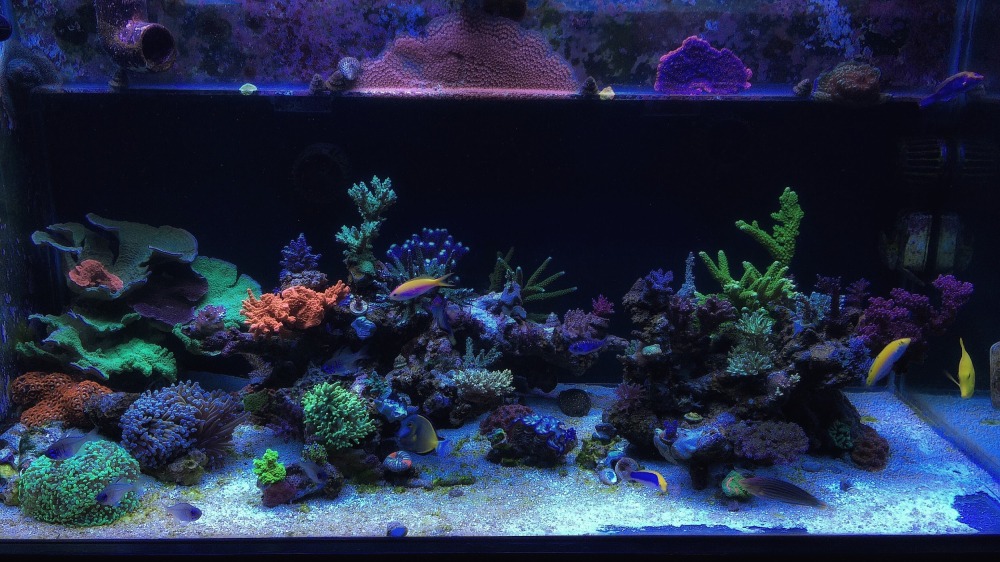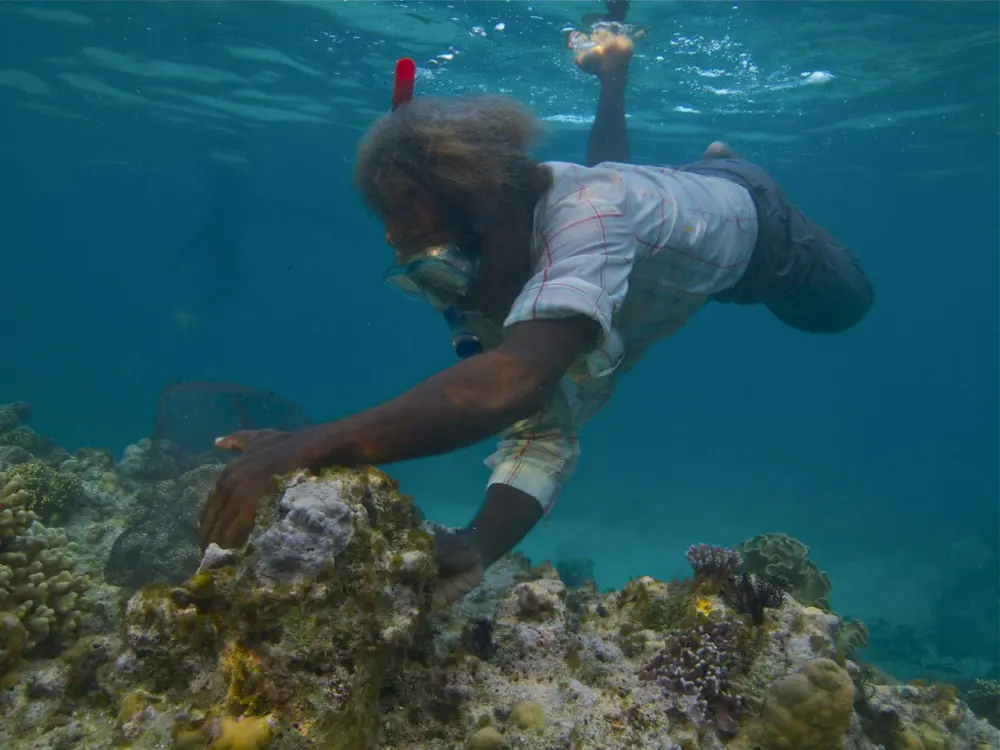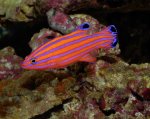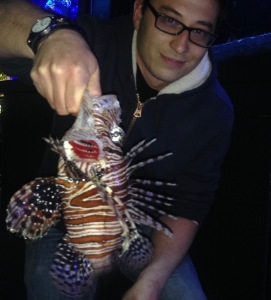Guest Blogger: Josh Cahill
The following guest post was voted best in the class for an undergraduate assignment on fisheries management from Humboldt State University’s Fall 2016 Fish Conservation and Management course taught by Dr. Andre Buchheister. The assignment required students to find a peer-reviewed article on a fisheries management topic that interests them and to communicate the issue in a blog format to a general audience.
Imagine the gentle sway of colorful corals, fishes of different hues and shapes flitting in and out of view, and an inquisitive shrimp peering out at you from the underside of the entrance to its cavern. This polychromatic image could be experienced on a tropical reef thousands of miles away…or from your favorite armchair.

Captivating millions, the popularity of the home marine aquarium hobby has grown dramatically in the past decade. In fact, estimates indicate there are more than two million home marine aquariums globally (Murray 2014). The marine aquarium trade has inspired people in developed nations to take interest in remote regions (with both positive and negative opinions toward the aquarium trade) and it has improved access to coral reef species for research and education.
Coral reefs in peril
However, the state of coral reefs is approaching the brink of global collapse with every stakeholder pointing the finger at someone else. Many communities living adjacent to reefs in low income regions depend on resource extraction as the basis of their economies. Although the marine aquarium trade has undeniably left its footprint, it has played a relatively small role in this crisis compared to other anthropogenic activities and impacts such as climate change, ocean acidification, sedimentation, and eutrophication resulting from increased coastal development, coral mining, and overfishing of food species (Carpenter 2008). It is also important to note that individuals or companies along the chain of ownership of live animals within the marine aquarium trade vary greatly in skill, methods, and ethics regarding harvest.
Involved in the wild capture of over 1800 species of fish and approximately 1,000 species of invertebrates from more than 40 countries, the marine aquarium trade is viewed by many as a threat to coral reef conservation (Rhyne 2014). There are concerns as to whether demand of species from the families Acanthuridae (surgeonfish) and Labridae (wrasses), and many invertebrate taxa exceeds sustainability. Less than 10% of the marine aquarium trade livestock is cultured; the freshwater aquarium trade, in contrast, consists of about 90% commercially aquacultured species (Murray 2014).

Marine aquarium trade management
Currently, management and regulation of species collected for the marine ornamental trades (i.e., aquarium, curio, home decor, and jewelry) are not sufficiently developed in most countries (Tissot 2010). The vast majority of animals harvested for the marine aquarium trade are exported from the Coral Triangle, the six million square kilometer area encompassing Indonesia, the Philippines, Papua New Guinea, the Solomon Islands, and Malaysia. Within this area of rich marine diversity, 71% of all the live animals in the marine aquarium trade originate from Indonesia and the Philippines alone (Tissot 2010).
On the other side of this global transaction, the United States imports 61% of all live animals exported for the marine aquarium trade worldwide. The marine aquarium trade is unique among other coral reef exploitative industries because it provides a luxury hobby, not a food or building material commodity, from mainly impoverished countries to some of the wealthiest nations in the world. The United States, especially, with its large market portion of the trade, can leverage its economic power to influence regulation and promote a healthy coral reef socio-ecological system (Tissot 2010).
Conservation opportunities for the marine aquarium trade

Conservation-minded businesses within the marine aquarium trade have been successful in expanding the cultured coral trade, breeding several fish species, and improving management in small, fragile fisheries through incentives and educating harvesters; but ecological impacts such as reduction, elimination, or changes in age structure of local populations, and destructive collection practices are evidence that the marine aquarium trade still has room for improvement with regards to sustainable management (Shuman 2005). Since management is not sufficiently developed or funded in many source countries, regulation must initially occur in importing countries. Because the goods provided by the marine aquarium trade are nonessential indulgences collected for affluent hobbyists, importing countries are essentially in the driver’s seat to create and enforce policies that place the management and harvesting practices of source countries under scrutiny.
Harvesters and exporters would certainly feel the effects of increased policy and enforcement in importing countries if their freight is seized and their importing customers are fined. Simultaneously, self-regulation within the trade by shifting the market demand for sustainable aquarium animals through consumer education would promote better harvesting and management strategies. The marine aquarium trade already demands a greater price for greater effort (e.g., the high price of species harvested from deep water like the candy basslet Liopropoma carmabi). If consumers are willing to pay more for animals harvested from renewable management areas and handled responsibly, there would be great incentive for a larger shift toward sustainability. This encompasses those within the chain of ownership in both source and importing countries and includes improved husbandry and shipping methods from questionable harvesters, exporters, wholesalers, and retail outlets.

Government policy of importing countries coupled with industry self-regulation could stimulate improved fisheries management. Marine protected areas (MPAs) can be a powerful tool in management, as the seeding effect of MPAs was clearly demonstrated in yellow tangs Zebrasoma flavescens, on the island of Hawaii (Christie 2010). A further push for aquaculture and MPAs in source countries from the marine aquarium trade could potentially offer harvesters a lucrative and renewable supply of aquarium animals. The marine aquarium trade possesses great transformative power and is in a position to serve as a catalyst for sustainable resource management, affecting all reef-exploitative industries.
 About the Author
About the Author
Hello, I’m Josh Cahill, and I have a genetic predisposition for an unhealthy fascination with just about anything living underwater. Some of my earliest memories are helping my father clean the family fish tank and staring enchanted at my uncle’s numerous ponds and aquariums. Moving from Hawaii to Northern California in my childhood ignited the spark that spiraled me into obsessive aquarium nerd-dom. Although there have been a couple of sabbaticals due to life events, I’ve had at least one (or twenty) aquariums at any given point in my life, and I’ve worked off-and-on in the aquarium industry since 1998. My wife Sarah, my best catch ever, was extremely supportive and encouraged me to pursue academia in a field more aligned with my interests. In 2012, I ended a five-year stint as a mechanical construction worker, enrolled in school, and got my old job back at the aquarium shop. I am currently a junior at Humboldt State University, working toward a Fisheries Biology degree with a marine emphasis. My eventual career goal is in the field of eco-friendly aquaculture for food, and recently I have had the exciting opportunity to work on an inland-marine integrated multi-trophic aquaculture system with my advisor and a group of other students. Thank you Dr. Buchheister and The Fisheries Blog staff for posting my essay!
References
Carpenter, K.E., Muhammad Abrar, Greta Aeby, Richard B. Aronson, Stuart Banks, Andrew Bruckner, Angel Chiriboga, Jorge Cortes, J. Charles Delbeek, Lyndon DeVantier, Graham J. Edgar, Alasdair J. Edwards, Douglas Fenner, Hector M. Guzman, Bert W. Hoeksema, Gregor Hodgson, Ofri Johan, Wilfredo Y. Licuanan, Suzanne R. Livingstone, Edward R. Lovell, Jennifer A. Moore, David O. Obura, Domingo Ochavillo, Beth A. Polidoro, William F. Precht, Miledel C. Quibilan, Clarissa Reboton, Zoe T. Richards, Alex D. Rogers, Jonnell Sanciangco, Anne Sheppard, Charles Sheppard, Jennifer Smith, Simon Stuart, Emre Turak, John E. N. Veron, Carden Wallace, Ernesto Weil, Elizabeth Wood. 2008. One-third of reef building corals face elevated extinction risk from climate change and local impacts. Science 321(5888): 560-3.
Christie, M. R., Brian N. Tissot, Mark A. Albins, James P. Beets, Yanli Jia, Delisse M. Ortiz, Stephen E. Thompson, Mark A. Hixon. 2010. Larval connectivity in an effective network of marine protected areas. PLoS ONE 5(12): e15715.
Murray, J.M., and Gordon J. Watson. 2014. A critical assessment of marine aquarist biodiversity data and commercial aquaculture: identifying gaps in culture initiatives to inform local fisheries managers. PLoS ONE (9)9: e105982.
Rhyne, A.L., Michael F. Tlusty, Les Kaufman. 2013. Is sustainable exploitation of coral reefs possible? A view from the standpoint of the marine aquarium trade. Current Opinion in Environmental Stability 7: 101-107.
Shuman, C. S., Gregor Hodgson, Richard F. Ambrose. 2005. Population impacts of collecting sea anemones and anemonefish for the marine aquarium trade in the Philippines. Coral Reefs 24: 564-573.
Tissot, B.N., Barbara A. Best, Eric H. Borneman, Andrew W. Bruckner, Cara H. Cooper, Heather D’Agnes, Timothy P. Fitzgerald, Amanda Leland, Susan Lieberman, Amy Mathews Amos, Rashid Sumaila, Teresa M. Telecky, Frazer McGilvray, Brian J. Plankis, Andrew L. Rhyne, Glynnis G. Roberts, Benjamin Starkhouse, Todd C. Stevenson. 2010. How US ocean policy and market power can reform the coral reef wildlife trade. Marine Policy (34)6: 1385-1388.

For more information, please take a look at the following relevant project: http://reeftoaquarium.com/